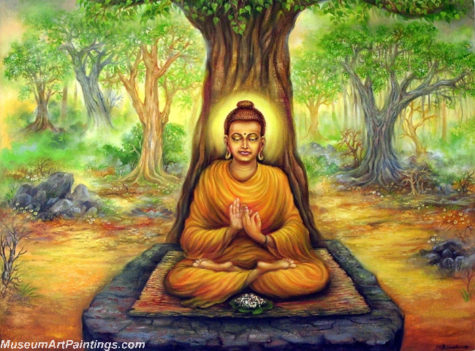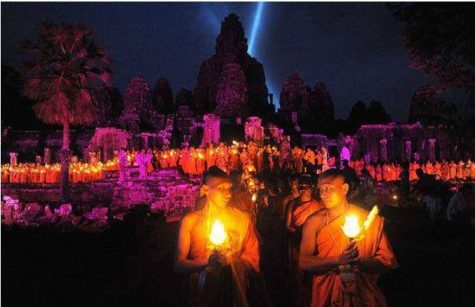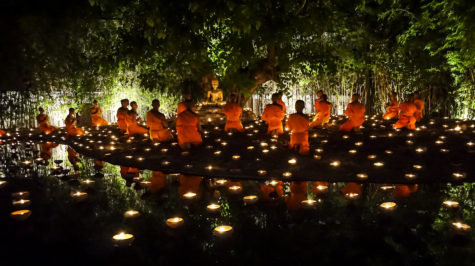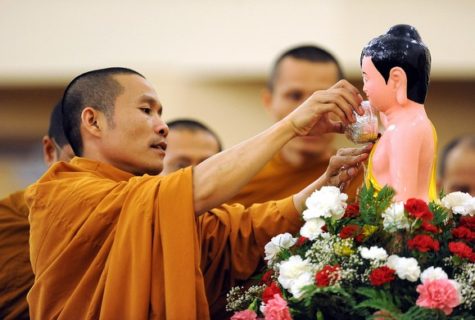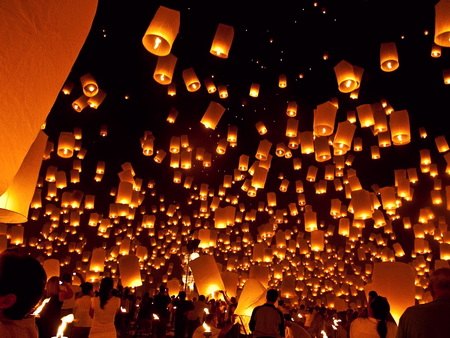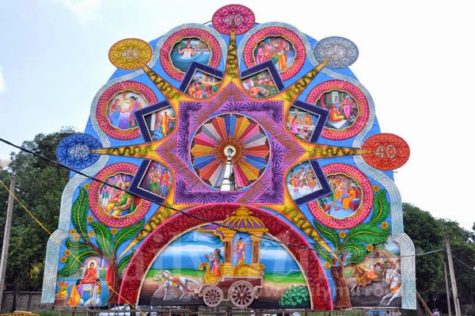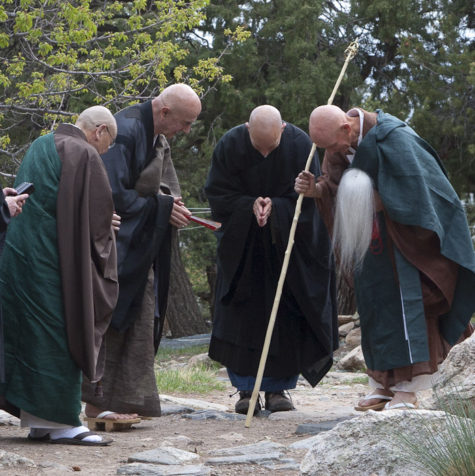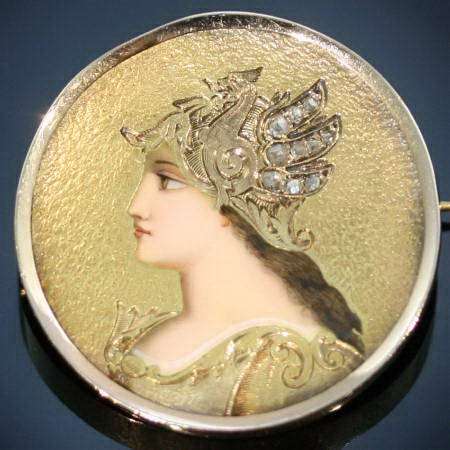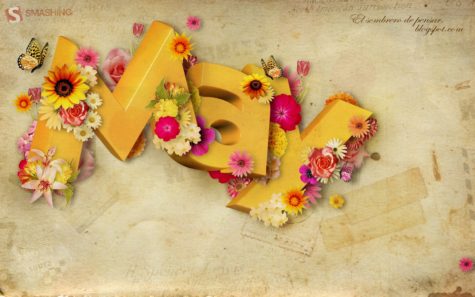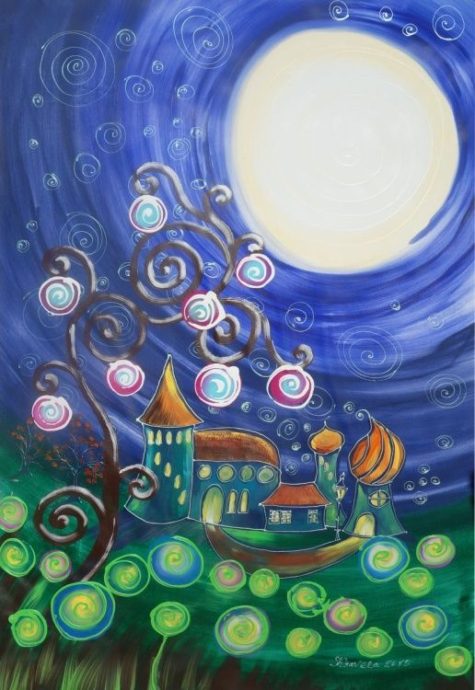Daily Archives: May 7, 2017
This is the holiest day of all Buddhist days marking the birth, enlightenment and nirvana of the Lord Buddha. It is celebrated on many different dates, and in many different ways all over the world.
In many east Asian countries Buddha’s Birth is celebrated on the 8th day of the 4th month in the Chinese lunar calendar (in Japan since 1873 on April 8 of the Gregorian calendar), and the day is an official holiday in Hong Kong, Macau, and South Korea. The date falls from the end of April to the end of May in the Gregorian calendar.
In Nepal:
In Nepal, Buddha’s birthday is celebrated on the full moon day of May. In 2017, the holiday occurs on May 10. The festival is known by various names, Buddha Jayanti, Buddha Purnima, Vaishakh Purnima and Vesak. Purnima means full moon day in Sanskrit. Among the Newars of Nepal, the festival is known as Swanya Punhi, the full moon day of flowers. The day marks not just the birth of Shakyamuni Gautam Buddha but also the day of his Enlightenment and Mahaparinirvana. But as a gentle effect of the West, the event of the birth is given paramount importance.
The event is celebrated by gentle and serene fervor, keeping in mind the very nature of Buddhism. People, especially women, go to common Viharas to observe a rather longer-than-usual, full-length Buddhist sutra, as something like a service. The usual dress is pure white. Kheer, a sweet rice porridge is commonly served to recall the story of Sujata, a maiden who, in Gautama Buddha’s life, offered the Buddha a bowl of milk porridge after he had given up the path of asceticism following six years of extreme austerity. This event was one major link in his enlightenment.
It is said that the Buddha originally followed the way of asceticism to attain enlightenment sooner, as was thought by many at that time. He sat for a prolonged time with inadequate food and water, which caused his body to shrivel so as to be indistinguishable from the bark of the tree that he was sitting under. Seeing the weak Siddhartha Gautama, a girl named Sujata placed a bowl of milk in front of him as an offering. Realising that without food one can do nothing, the Buddha refrained from harming his own body.
In India:
The birth of Buddha or Tathagata is celebrated in India, especially in Sikkim, Ladakh, Arunachal Pradesh, Bodh Gaya, various parts of North Bengal such as Kalimpong, Darjeeling, and Kurseong, and Maharashtra (where 6% of total population are Buddhists) and other parts of India as per Indian calendar. The day is celebrated much the same way as in Nepal.
In Thailand:
Visakha Puja, the year’s greatest religious holiday, which commemorates the Buddha’s birth, enlightenment and death, comes during seeding and plowing. This is the holiest day of all Buddhist days marking the birth, enlightenment and nirvana of the Lord Buddha.
Buddhists will make merits and attend sermons at the temples (Wat). In the evening, Buddhist monks lead the laity in a magnificent candle-light triple circumambulation of Buddhist chapels throughout the country.Village elders attend temple celebrations and sermons during the day.
Those who have been working all day in the fields return at dusk to join the lovely candle or torchlit procession that circumambulates the temple chapel three times. Enacted in every village, town and city Wat (temple), each person carries flowers, three glowing incense sticks and a lighted candle in silent homage to the Buddha, his teaching and his disciples.
In Japan:
In Japan, Buddha’s birth is also celebrated according to the Buddhist calendar but is not a national holiday. On this day, all temples hold Kanbutsu-e or Hana-matsuri, meaning ‘Flower Festival’. The first event was held at Asuka-dera in 606.
Japanese people pour ama-cha (a beverage prepared from a variety of hydrangea) on small Buddha statues decorated with flowers, as if bathing a newborn baby.
In Korea:
Lotus Lantern Festival celebrating Buddha’s Birthday, is celebrated in South Korea according to the Lunisolar calendar. This day is called Seokga tansinil, meaning “Buddha’s birthday” or Bucheonim osin nal meaning “the day when the Buddha came.”.
Lotus lanterns cover the entire temple throughout the month which are often flooded down the street. On the day of Buddha’s birth, many temples provide free meals and tea to all visitors. The breakfast and lunch provided are often sanchae bibimbap.
In Sri Lanka:
This is one of the major festivals in Sri Lanka. It is celebrated on the first full moon day of the month of May. People engage in religious observances and decorate houses and streets with candles and specially made paper lanterns. some stores give out free meals for people.
In specific places, there are buildings made out of light bulbs but from a distance it represents pictures from the Buddha’s life. They are called vesak thorun (Pandals). People sing songs called “bhakthi geetha”.
United States:
Among the many practicing Buddhists in the United States, Buddha’s Birthday (Hana-Matsuri) is widely celebrated on April 8 of the standard Gregorian calendar.
In 1968 on April 8 in the California Bay Area, the first circumambulation of Mt. Tamalpais to celebrate Buddha’s Birthday was conducted. The director of the Esalen at Stanford program designed a leaflet and had it distributed to all universities in the Bay Area. Some brought sleeping bags and slept overnight in Muir Woods to enable an early start up the Dipsea Trail.
For the several hundred people involved, it was an unforgettable day clear, sunny, calm, and somewhat warm. Gary Snyder, Allen Ginsberg, and Philip Whalen were there. Taught by Gary and Allen, we chanted a different mantra at every station of the clockwise circumambulation. We all stopped for lunch on a sunny hillside. Allen brought miso for lunch, and he passed it around for others to enjoy.
Starting in 1969 on April 8 (and into the 1970s) at Tassajara Zen Mountain Center, Hana-Matsuri was celebrated each spring. Dressed in formal black robes, the roughly 70 monks and students formed a formal procession to the Horse Pasture with the leader periodically ringing a small, clear bell.
A temporary stone altar was built under a huge oak tree in a gorgeous field of green grass and abundant wildflowers; a small statue of a baby Buddha was placed upon it in a metal basin. Then each person would in turn approach the altar, ladle one thin-lipped bamboo dipperful of sweet green tea over the statue, bow, and walk to one side. How haunting and mysterious – the juxtaposition of formality, ritual and wild Nature.
Other countries:
Some places have a public holiday one week later, on the fifteenth day of the fourth month in the Chinese Lunar Calendar, to coincide with the full moon. The names for this festival vary with each country, for instance Visakha Puja in Thailand or Lễ Phật đản in Vietnam. In some countries it is a public holiday, in others it is not.
The May full moon is also known as the Flower Moon, Milk Moon, Corn Planting Moon, and Corn Moon. The energies around this moon are ones of health, romance, love and wisdom. We are encouraged to begin to take action on the things we’ve recently been planning.
Once April’s rains and winds have subsided, the sun begins to warm up the earth and we’re able to get the gardens planted. Thus May is the month we begin to sow our crops. Get out in the garden under a Flower Moon and put your hands into the soil. May’s Moon brings us energy of love, wisdom and health. Spring is a time of fertility, and May is a fiery month indeed — full of lust and passion! It’s called the month of the Hare’s Moon — and we all know what hares are busy doing in the spring.
Correspondences:
- Colors: Red, orange, yellow
- Gemstones: Ruby, garnet, amber, Apache tear
- Trees: Hawthorn, rowan
- Gods: Kali, Priapus, Cernunnos, Flora
- Herbs: Cinnamon, members of the mint family
- Element: Fire
Gems and oils to boost the energy of the Hare’s Moon
- Gemstones: Malachite, Jade, Emerald, Peridot or any other green-hued stones.
These gems help enhance the energy of the heart chakra, which governs our compassion, generosity, love and harmony. If you need a boost in any of these areas, simply slip a green stone into your pocket, or put on a piece of green-gemmed jewelry.
- Essential Oils: Eucalyptus, Thyme, Sandalwood, Pine, Melissa, Bergamont.
These oils will help you connect with your unconscious mind and set the intention of love, wisdom and compassion
Celebrating The May Full Moon
The May full moon is a time when we begin to really notice more light in our lives. The days are longer, the grass is green and the flowers are starting to bloom. The energy at this time is playful and light, energetic and buoyant. If you want to really celebrate this moon and the energy it brings, you can do fun things like:
- host a pot-luck with a spring theme
- visit your local elementary school and volunteer during art class
- light a green candle and meditate on your thankfulness for the feeling of renewal and rejuvenation.
Other ideas:
Another great way to connect with the Hare’s Moon is to bless some seeds, seedlings or garden plants, and then plant them. Doing this involves intentionally adding positive energy to these plants, and then nurturing their growth and health. This is a powerful symbolic exercise that will help you focus your energy on intentionally giving “good vibes” to your environment. Doing this will make you feel empowered, positive and loving.
This is also a good time to work on magic related to careers and jobs. Thinking about switching to a new position, or perhaps trying a new field altogether? Want to take a class or get your degree? Take the seeds you’ve planted last month, and allow them to bloom and grow in your favor. Do some fire divination this month to help guide you on your way.
source: PaganWiccan
The Lemuria, the festival in honor of the Lemures, the spirits of dead family members who wander the earth on these three spring nights (May 9, 11, and 13).
The Lemuria is held on odd-numbered days because even-numbered days are considered unlucky. It is a festival designed to honor the Lemures, they are regarded as baleful spirits of the dead who died violent or otherwise untimely deaths.

At midnight, the Paterfamilias (head of the household) arises and dresses with no knots, buckles, or other constricting items on his person (thus he is barefoot). He makes the sign of the mano fico with his hands (a fist with the thumb placed between the index and middle fingers; a sign of good luck and fertility) and then washes his hands in pure water. He then walks through the house, spitting out nine black beans, being careful not to look behind him as the lemures accept the beans as a sort of ransom for the living members of the household. As he spits out each one, he says
“With these beans I redeem me and mine.”
Once all nine beans have been accepted by the lemures and the entire house walked through, the Paterfamilias then washes his hands again, clashes two vessels of bronze together, and nine times says
“Ghosts of my fathers, be gone.”
(Manes exite paternae.)
Source: Novaroma
According to many pagan calendars, May 8th is listed as “The Festival of Mens , the Roman goddess of mind and consciousness.” I did not, however, find any information on Mens or on a festival of Mens – what I did find was this small excerpt at Wikipedia:
By a process of folk etymology, the Romans could have confused the phones of her foreign name with those of the root men- in Latin words such as mens meaning “mind”, perhaps because one of her aspects as goddess pertained to the intellectual. The word mens is built from the Proto-Indo-European root *men- ‘mind’ (linked with memory as in Greek Mnemosyne; memory, remembrance, recollection, Manush in Sanskrit meaning mind ).
Because of this, I can only assume that the Festival of Mens is actually a Festival of Minerva, Goddess of wisdom and learning, meditation, inventiveness, accomplishments, the arts, spinning and weaving, and commerce. Minerva was identified with Pallas Athene, bestower of victory, when Pompey the Great built her temple with the proceeds from his eastern campaigns.
The Romans celebrated her festival from March 19 to March 23 during the day which is called, in the neuter plural, Quinquatria, the fifth after the Ides of March, the nineteenth, an artisans’ holiday. A lesser version, the Minusculae Quinquatria, was held on the Ides of June, June 13, by the flute-players, who were particularly useful to religion.
Source: Wikipedia
For the purpose of your magical escapades, the theme is definitely blossoming and liveliness. Use as many flower parts as possible in spells and rituals, and go outside frequently to get closer to nature. Energies emphasized by this month include creativity, inventiveness, fertility, health, and metaphysically “spring cleaning” any area of your life or sacred space.
Bring me my drum and bring me my cymbal,
Bring forth the sustrum, bring forth the timbal.
Dance now for Hathor, celebrate beauty,
dance in Her honor, sing for our lady.
May gets its name from the Roman goddess Maia, who embodies the earth’s renewal during spring. Next to New Year’s Eve, May Day was among the most popular holidays in the old world, marking the time when the sun’s warmth and nature’s fertility began appearing in the land. Later, well over one hundred nations chose to celebrate Labor Day on May 1, giving everyone a much-needed rest from winter’s tasks.
The Greek goddess Maia, the most important of the Seven Sisters (the Pleiades) and said to be the mother of Hermes, gave the name to this month. Some form of this goddess’s name was known to people from Ireland to as far away as India. The Romans called her Maius, goddess of Summer and honored her at the Ambarvalia, a family festival for purification and protection of farm land.
In the Celtic cultures, May was called Mai or Maj, a month of sexual freedom. Green was worn during this month to honor the Earth Mother. May 1 was the Celtic festival of Beltane, a festival celebrating fertility of all things. Cattle were drivien through the Beltane bonfires for purification and fertility. In Wales, Creiddylad was connected with this festival and often called the May Queen. The maypole and its dance is a remnant of these old festivities.
The Sheila Na Gig is still seen carved in the decorations of many Irish churches. This goddess figure is a grotesque, often emaciated, woman shown squatting and holding wide her private parts. Many Irish still know her as the protector of the poor and hang old clothes on hawthorn bushes on May 4th. This is believed to avert poverty. It is possible that the Australian term “Sheila,” used as a name for any woman, refers to this ancient deity and her carvings.
Bona Dea, the Roman Good Goddess, had her festival on the night between may 2nd and 3rd. No men were allowed to attend.
The Roman festival of Lemuria was to placate and remember the Lemures, or the wandering spirits of the dead. Each family performed its own private ceremonies, which ended with taking gifts to the graves. For those who had died and had no graves, the head of the household walked barefoot through the house, casting nine black beans behind him.
The Greeks had a special festival for the god Pan during May. Pan was a wild looking deity, half man, half goat. As a token of his frequent sexual adventures, he was shown with an erect penis. Pan invented the syrinx, or pan-pipes, made out of reeds. Originally, he was not an oppressor of women, but their loving companion.
May 19-28 was the solemn Greek festival called Kallyntaria and Plynteria. This was devoted to the cleaning and freshening of sacred statures and temples. The statues, small enough to be moved, were taken to a nearby river or lake and washed until clean. This was serious business with no singing or merry-making.
At the end of the month was a Roman celebration honoring the Underworld Queen Prosperina and her consort Pluto. Proserpina ruled over the resting place of the shades (souls), but her kingdom was connected with more than death. Pluto was also known as the deity of hidden wealth.
In Finland, May 1 was celebrated as Rowan Witch Day, a time of honoring the goddess Rauni, who was associated with the mountain ash or rowan. Twigs and branches of the rowan were, and still are, used as protection against evil in this part of the world. Some sources list Rauni as a god.
The Slavonic-Russian cultures had a similar, but longer, festival celebrating merriment, rivers, and well-being. This occured between May 25 and June 25. Originally it honored the goddess Lada, who later was changed to the god Lado.
Mugwort was a sacred herb in China and Europe. As part of the celebration on May 5, the Chinese made dolls out of the leaves. They hung these dolls above gates and doors to repel negative influences and entities.
In Tibet, an old Nature festival for the beginning of Summer and the rain deities became a celebration of Buddha’s death and his attainment of Buddha-hood. The attainment festival occurred on May 8, while celebration of Buddha’s death was on May 15. Deceased relatives were prayed for at this time.
The Incas held Aymoray Quilla or Hatun Cazqui, which was the Great Cultivation.
From: Moon Magick
What follows is a list (in alphabetical order) of the names given to the May moon. Also listed is the tradition and/or origin of that moon name:
Alewive Moon ~Passamaquoddy
Big Leaf Moon ~Mohawk
Blossom Moon ~Anishnaabe
Bright Moon ~Celtic
Corn Planting Moon ~Taos, Algonquin
Corn Weed Moon ~Agonquin
Dyad Moon ~other
Fat Horses Moon ~Cheyenne
Field Maker Moon ~Abernaki
Flower Moon ~other
Frog Moon ~Cree
Frogs Return Moon ~other
Grass Moon ~Neo Pagan
Green Leaf Moon ~Apache
Green Leaves Moon ~Dakota
Hare Moon ~Medieval English
Hoeing Corn Moon ~Winnebago
Idle Moon ~Assiniboine
Joy Moon ~other
Leaf Tender Moon ~San Juan
Little Corn Moon ~Natchez
Merry Moon ~other
Milk Moon ~Colonial American, Algonquin
Mothers Moon ~Janic (full)
Mulberry Moon ~Greek
Ninth Moon ~Wishram, Janic (dark)
Panther Moon ~Choctaw
Planting Moon ~Cherokee
Ponies Shed Moon ~Sioux
Shaggy Hair Moon ~Arapaho
Sproutkale Moon ~other
Strawberry Moon ~Potawatomi
Waiting Moon ~Hopi
